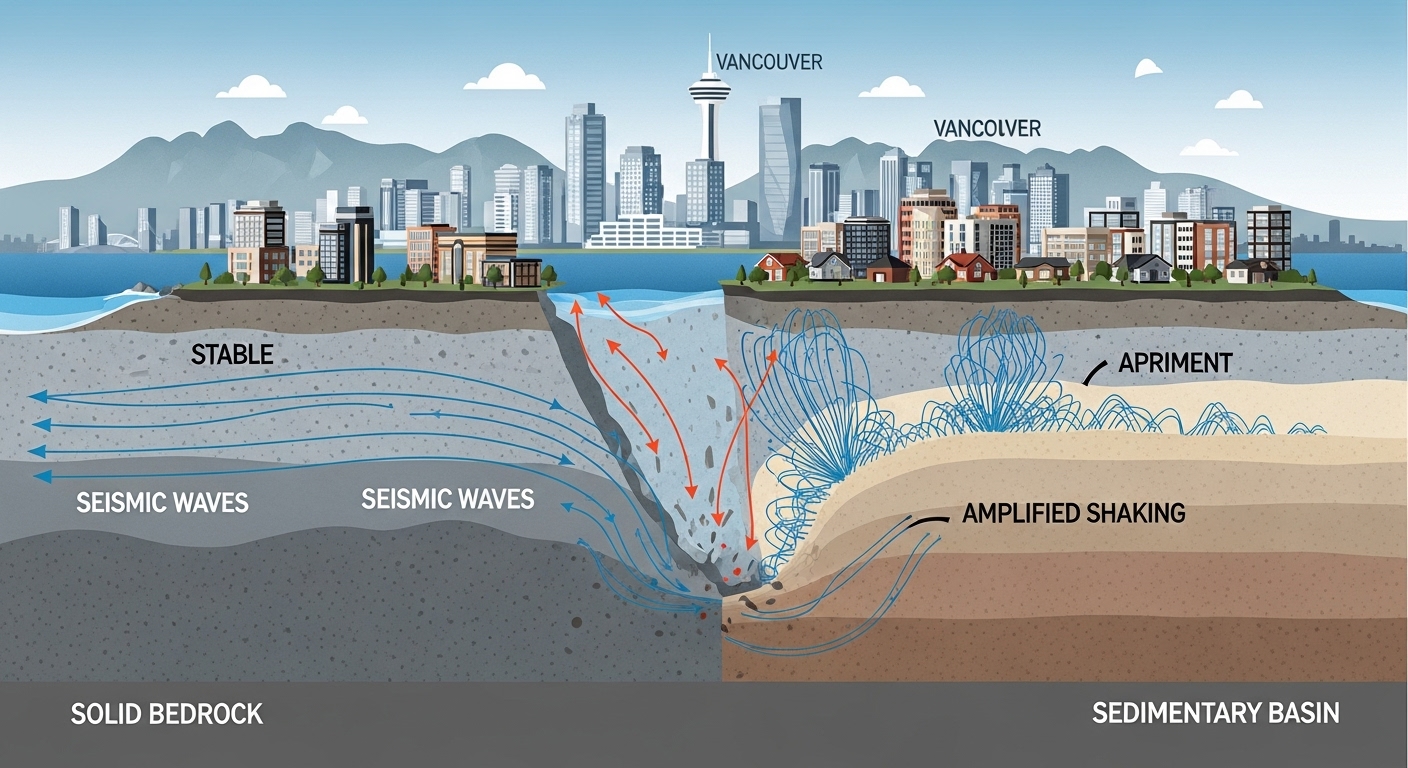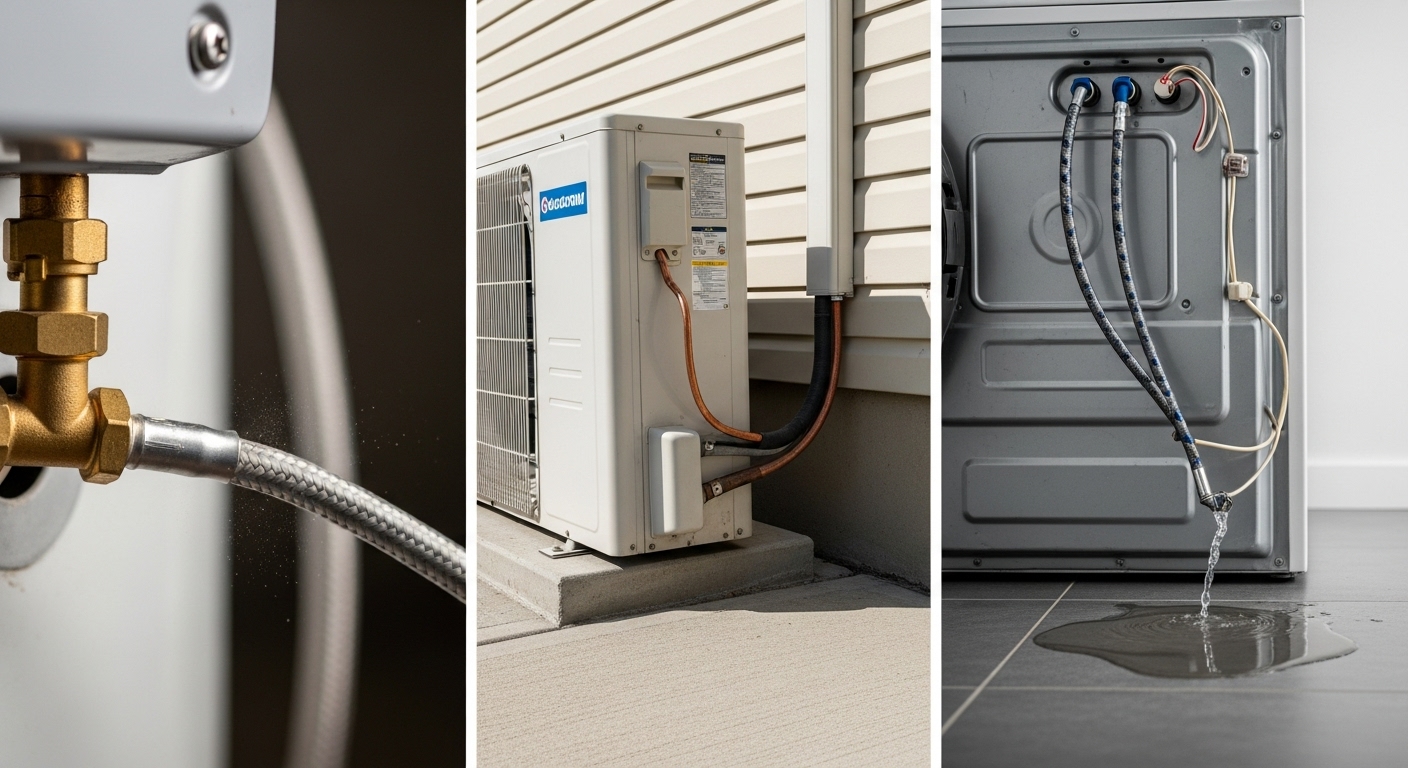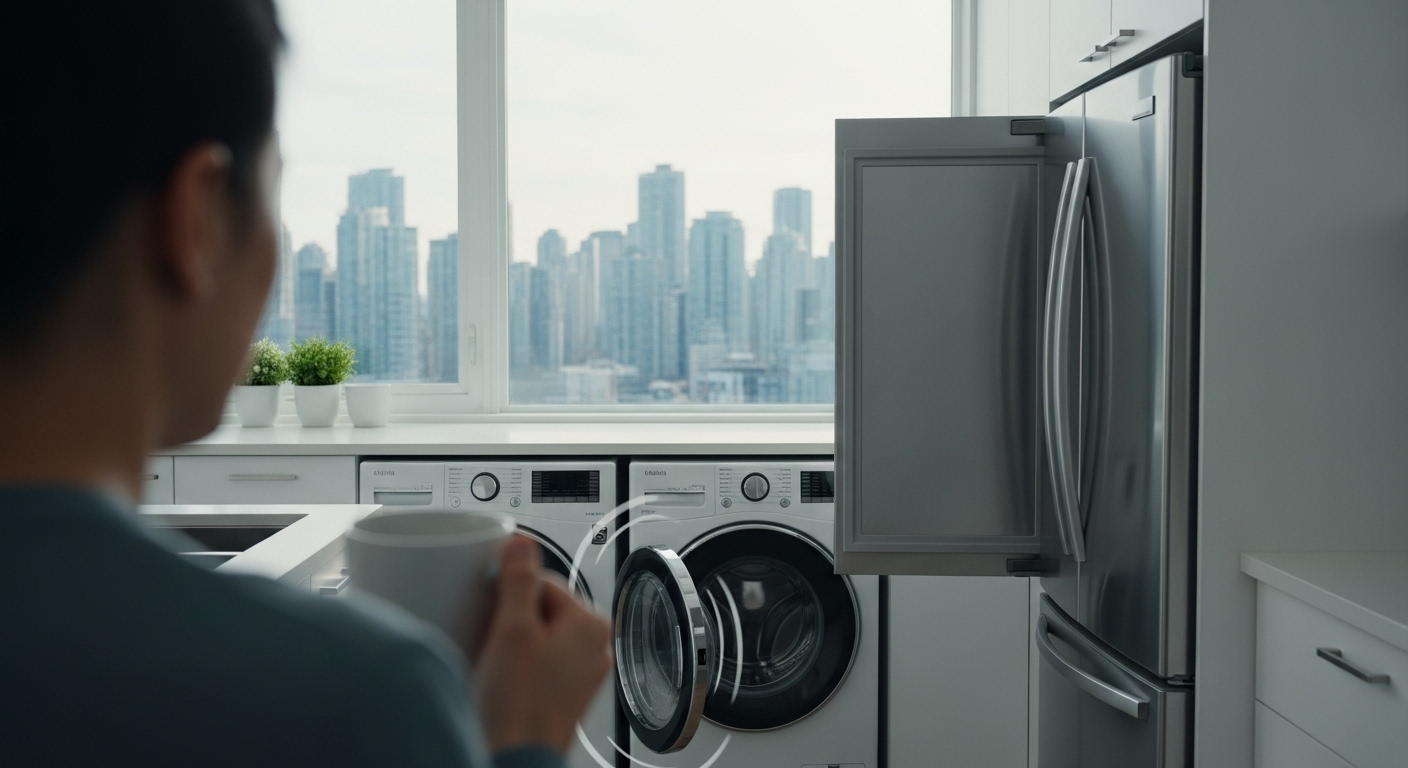Ever wondered why your washing machine started acting up after that “barely noticeable” tremor last month, or why your refrigerator seems to be working harder than usual lately? The culprit behind your appliance woes might not be age or normal wear – it could be Vancouver’s constant seismic activity silently wreaking havoc on your home’s most essential systems.
Picture this: you’re sipping your morning coffee when a gentle rumble shakes the house for just a few seconds. Most of us barely pause our conversations, maybe make a quick joke about “did you feel that?” and carry on with our day. But what we don’t realize is that even these minor seismic events are gradually nudging our appliances out of alignment, creating performance issues that we’ll blame on everything except the real culprit months later.
Living in Vancouver means accepting that we’re basically camping on top of one of North America’s most significant earthquake zones. The Cascadia Subduction Zone doesn’t just threaten us with the “Big One” – it’s constantly sending smaller tremors through our homes that are slowly but surely messing with our appliances in ways most people never connect. Your washing machine’s recent obsession with doing the cha-cha during the spin cycle? That dishwasher that’s suddenly leaving spots on everything? The HVAC system that can’t seem to maintain consistent temperatures anymore? These could all be signs of seismic damage that’s been accumulating over time.
What makes this particularly frustrating is how these problems mimic normal appliance aging, leading homeowners to shell out hundreds or thousands of dollars for repairs and replacements that might have been prevented with proper seismic protection. Vancouver’s unique geological situation – sitting on a deep sedimentary basin that amplifies earthquake waves – means our appliances face risks that homeowners in other cities simply don’t deal with.
Key Outtakes:
- Vancouver’s sedimentary basin geology amplifies earthquake waves by up to 50%, creating more severe appliance misalignment than typical seismic zones
- Minor earthquakes cause gradual appliance displacement that homeowners mistake for normal aging, leading to unnecessary repairs costing $500-$3,000 per appliance
- Post-earthquake appliance inspection within 24-48 hours can identify damage before it becomes dangerous, preventing gas leaks and electrical hazards
- Professional seismic appliance calibration services can restore performance for 60-80% of earthquake-affected appliances without full replacement
- Standard appliance warranties specifically exclude earthquake damage, making proper anchoring and flexible connections essential protective investments

Why Vancouver’s Geology Makes Appliance Damage Worse
The thing about living in Vancouver that most people don’t fully grasp is how our city’s unique geological foundation turns every earthquake into an amplified nightmare for home appliances. We’re not just dealing with regular old seismic activity here – we’re sitting on top of a deep sedimentary basin that acts like a giant bowl, trapping and magnifying earthquake waves in ways that make appliance damage far more likely and severe than in other earthquake-prone areas.
When seismic waves hit Vancouver’s sedimentary basin, they don’t just pass through like they would with solid bedrock. Instead, they get caught, bounced around, and intensified, creating prolonged shaking that can last significantly longer than the original earthquake. This extended duration gives appliances more time to shift, tip, and sustain internal damage that might not be immediately obvious but will definitely affect performance down the road.

Recent comprehensive seismic mapping completed by Western University researchers has revealed just how dramatically earthquake effects vary across Metro Vancouver neighborhoods. The team measured vibrations at over 2,300 locations and found that some areas experience significantly more intense shaking than others, depending on the specific ground conditions beneath each neighborhood. This means your appliances might be at higher risk simply based on where you live within the Greater Vancouver area.
The Cascadia Subduction Zone represents the ultimate threat to Vancouver appliances, with the potential to generate magnitude 9.0+ earthquakes featuring 4-6 minutes of continuous intense shaking. But here’s what’s really concerning: even minor tremors from this massive fault system can cause cumulative damage over time. Each small earthquake nudges appliances slightly out of alignment, and these micro-adjustments add up to create performance problems that homeowners typically attribute to normal wear and tear.
What makes Vancouver’s situation particularly challenging is that our building codes and appliance installation practices weren’t originally designed with this level of seismic amplification in mind. Many older homes and even some newer installations lack the specialized anchoring and flexible connections needed to protect appliances from the extended, amplified shaking that characterizes earthquakes in our region.
How Minor Earthquakes Create Major Appliance Problems
The sneaky thing about seismic appliance damage is how it often masquerades as normal aging or mechanical wear. Unlike catastrophic earthquake damage that’s immediately obvious, the gradual misalignment caused by repeated minor tremors creates performance issues that develop slowly over weeks or months, making the connection to seismic activity nearly impossible for homeowners to recognize.

Take washing machines, for example – these heavy, water-filled appliances are particularly vulnerable to what’s called “walking” during even minor seismic events. The combination of their rotating drum mechanism and substantial weight means that earthquake shaking can easily disrupt their carefully calibrated balance systems. What starts as a slight shift during a minor tremor can evolve into serious balance problems that cause violent shaking during spin cycles, potentially leading to water line ruptures and flooding damage.
The internal components of washing machines – including cement counterweights, shock absorbers, and drum bearings – are engineered to handle the controlled movement of normal operation, but they’re not designed to withstand the irregular forces generated during earthquake shaking. Even a small seismic event can knock these components out of alignment, creating ongoing vibration and performance issues that homeowners typically blame on the machine “getting old” rather than earthquake damage.
HVAC systems face their own unique set of seismic challenges, particularly the outdoor units that are mounted on concrete pads or rooftop installations. During earthquake shaking, these heavy units can shift, tip, or even separate from their mounting systems, creating stress on refrigerant lines, electrical connections, and ductwork. The refrigerant piping system is especially vulnerable, as even minor displacement can cause leaks that gradually degrade system performance while potentially releasing harmful chemicals.
Refrigerators present another interesting case study in seismic appliance damage. These appliances rely on precise compressor operation and refrigerant circulation to maintain proper cooling, but earthquake shaking can disrupt these delicate systems in multiple ways. The compressor itself can be damaged by electrical fluctuations during seismic events, while the refrigerant lines can be stressed or kinked if the appliance shifts position. Additionally, the automatic ice makers and water dispensers that many modern refrigerators feature depend on steady water pressure and proper alignment – both of which can be affected by seismic activity.
Perhaps most concerning of all are gas-powered appliances, which face unique risks during earthquake events due to their connection to household natural gas systems. Water heaters, ranges, dryers, and furnaces can develop dangerous gas leaks if their supply lines become stressed during seismic movement. What makes this particularly dangerous is that small gas leaks might not be immediately detectable but can create fire and explosion risks that persist long after the earthquake has passed.
The Cascade Effect of Appliance Misalignment
What many Vancouver homeowners don’t realize is how appliance problems from seismic activity can create a domino effect throughout their home’s systems. A washing machine that’s been knocked out of balance doesn’t just affect laundry – it can create vibrations that stress nearby appliances, loosen wall fixtures, and even affect plumbing connections in adjacent areas. Similarly, a misaligned HVAC system doesn’t just impact heating and cooling; it can strain electrical systems and create air quality issues that affect the entire home.
This interconnected nature of home systems means that ignoring seismic appliance damage often leads to more expensive problems down the road. What starts as a minor performance issue in one appliance can evolve into systematic problems that require extensive repairs across multiple systems. The key is recognizing these issues early and addressing them before they cascade into bigger, more expensive problems.
Identifying Silent Earthquake Damage in Your Appliances
The tricky part about earthquake-related appliance damage is learning to distinguish between normal wear patterns and seismic-induced problems. While regular appliance aging typically involves gradual performance decline over years, seismic damage often creates sudden changes that appear seemingly out of nowhere but can be traced back to recent earthquake activity




